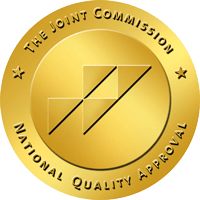Many people don’t realize how dangerous alcohol can be because drinking has become so normalized in American culture. Though not everyone who tries alcohol will develop a substance use disorder, millions of people become addicted and struggle to quit on their own.
When trying to taper off their drinking or stop cold turkey, many long-term drinkers experience uncomfortable, frightening or dangerous withdrawal symptoms. Here’s what you need to know.
What Causes Alcohol Withdrawal?
Even though you may feel more enthusiastic and energetic when drinking, alcohol is a central nervous system depressant. It slows down brain function and changes the way your nerves send messages back and forth.
If you only drink occasionally, you are less likely to acquire a substance use disorder. However, once you develop a drinking habit, your central nervous system will eventually adjust to the continual presence of alcohol in your system. When the alcohol level suddenly drops, your brain stays in the same hyperalert state, resulting in withdrawal.
There are several types of alcohol withdrawal you should be aware of.
Acute Withdrawal
For most people, alcohol addiction progresses slowly, which means you could become psychologically and physically dependent before you realize it. If you’re starting to worry that you might have a problem with alcohol, note how you feel when you’re sober.
Depending on factors like your age, weight, health history, how much you typically drink and how long you’ve been relying on alcohol, you could enter the acute withdrawal phase as early as six hours after your last drink, with symptoms like these:
- Anxiety
- Shaky hands
- Headache
- Nausea
- Vomiting
- Insomnia
- Sweating
Delirium Tremens
Delirium tremens is the most severe form of alcohol withdrawal, involving potentially fatal symptoms like seizures and hallucinations. This condition, which may begin 48 to 72 hours after you stop drinking, most often occurs in people with a history of excessive alcohol abuse who abruptly quit drinking or try to taper off their alcohol use too quickly.
The best-known delirium tremens symptom is body tremors, which is why you may hear people refer to delirium tremens as “the shakes.” Other potential issues include:
- Confusion
- Decreased attention span
- Deep sleep lasting longer than a day
- Delirium
- Mood swings
- Hallucinations
- Restlessness
- Fatigue
In the most severe cases, violent seizures are a symptom of delirium tremens. Because these might be fatal, you should treat this condition as a serious medical emergency and call 911 immediately.
Post-Acute Withdrawal
While the initial phase of alcohol withdrawal is short-lived, some long-term, heavy drinkers go on to develop a condition known as post-acute withdrawal syndrome. PAWS involves various unpredictable psychological and mood-related symptoms that can appear cyclically for up to a year after the original withdrawal period has ended.
Though the medical community has not reached a definitive consensus about why some recovering alcoholics experience PAWS, many addiction experts suggest the chemical changes addiction causes in the brain over time may contribute to the development of this condition.
Do You Need Alcohol Detox?
If you are physically and psychologically dependent on alcohol, trying to quit drinking by yourself can be dangerous. Furthermore, an at-home detox doesn’t offer the support and supervision you need to succeed in your motivation to quit drinking and purge alcohol’s damaging effects from your system.
At Pillars Recovery, our medically managed alcohol detox program sets the stage for the next phases of your sobriety journey. Our health care professionals will monitor your alcohol withdrawal symptoms and provide counseling to help you prevent a relapse back into alcohol abuse. To learn more about men’s and women’s alcohol abuse treatment in California, contact us today.







